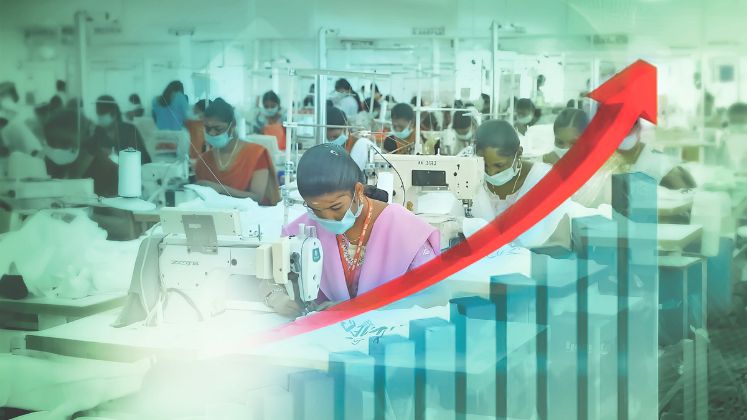Experts emphasize that with over one crore registered MSMEs accounting for about 36% of India’s manufacturing output and 45% of exports, their importance is undeniable.
Table of Contents
MSME Sector Applauds Credit Expansion….
To expand the inclusion of enterprises within the micro, small, and medium enterprises (MSME) sector, Union Finance Minister Nirmala Sitharaman announced new classification criteria on Saturday. She indicated that the investment threshold for MSME classification will be increased to 2.5 times, while the turnover limits will be doubled.
During her address, Sitharaman stated, “In order to facilitate greater efficiencies of scale, technological advancement, and improved access to capital, the investment and turnover thresholds for the classification of all MSMEs will be raised to 2.5 and 2 times, respectively. This initiative will instill confidence in these enterprises to expand and create job opportunities for our youth.”

Expert Reactions from the MSME Sector on the Union Budget 2025-26
The Union Budget 2025-26 has elicited a range of responses from experts in the Micro, Small, and Medium Enterprises (MSME) sector. Key measures announced include enhancing investment and turnover limits for MSME classification to 2.5 and 2 times, respectively, and steps to improve credit availability with guarantee cover.
Gurjodhpal Singh, CEO of Tide India, acknowledged the budget’s efforts but expressed concerns that it falls short in addressing certain critical areas for MSMEs.
Overall, the budget has been recognized for its focus on economic reforms, ease of doing business, and growth-oriented policies, which are expected to positively impact the MSME sector.
Gurjodhpal Singh, CEO of Tide India, pointed out that the budget falls short in some areas. He believes that a more focused approach to using artificial intelligence in business and fintech partnerships could have significantly improved credit access for MSMEs. While initiatives like turning India Post into a public logistics entity and using rural post offices for economic development help drive digitization, a direct push for AI-driven solutions would have been even more beneficial. Additionally, the budget missed an opportunity to introduce tax reforms that could have eased compliance burdens for MSMEs, which remains a major challenge for the sector.
Mukul Goyal, Co-Founder of Stratefix Consulting, welcomed the government’s move to raise investment and turnover limits for MSME classification. He believes this will allow more businesses to benefit from MSME perks, boosting growth and competitiveness. He also highlighted the increase in credit guarantee coverage for micro-enterprises from ₹5 crore to ₹10 crore as a significant step. This is expected to generate an extra ₹1.5 lakh crore in credit over the next five years, helping small businesses invest in innovation and expansion. However, he stressed that MSMEs still face challenges in accessing timely and affordable credit. Streamlining the loan process and cutting red tape will be crucial to ensuring these benefits reach businesses at the grassroots level.
Jyoti Prakash Gadia, Managing Director at Resurgent India, noted that MSMEs have been identified as one of the four key drivers of India’s growth in the government’s vision for a developed economy. He emphasized that MSMEs have immense potential to generate employment, boost exports, and drive inclusive growth—an aspect the budget has rightly recognized. The introduction of 10 lakh credit cards with a ₹5 lakh limit each for micro-enterprises is expected to be a game-changer, providing much-needed financial support to businesses registered on the Udyam portal.
Sanjay A. Chhabria, Senior Director of Indirect Tax at Nexdigm, remarked that the Finance Minister’s renewed focus on the “Make in India” initiative is intended to bolster the MSME sector, a crucial element of the country’s economy. Nevertheless, these enterprises are likely to face considerable competition from international initiatives such as “Make in USA” and similar programs in other nations that are enhancing their domestic manufacturing capabilities. This global rivalry may affect the market share and growth potential of Indian MSMEs. To address these challenges, it is essential for Indian MSMEs to concentrate on improving productivity, embracing innovative technologies, and enhancing energy efficiency.
Ayush Lohia, CEO of Lohia, expressed that the government’s efforts to support MSMEs and promote manufacturing are commendable. The introduction of customized credit cards with a limit of Rs 5 lakh will significantly improve access to capital for micro industries. Furthermore, increasing investment and turnover thresholds for MSMEs will foster growth and enhance operational efficiency.
Kishore Lodha, Chief Financial Officer of UGRO Capital, noted that there are several positive developments for the sector, including an increase in the limits for MSME classification from 2 to 2.5 times, which will benefit the sector. The guarantee scheme for micro and small enterprises has been expanded from a maximum limit of Rs 5 crore to Rs 10 crore, thereby increasing credit availability for this segment. Additionally, the issuance of 10 lakh credit cards to MSMEs will assist them in managing their working capital more effectively.
